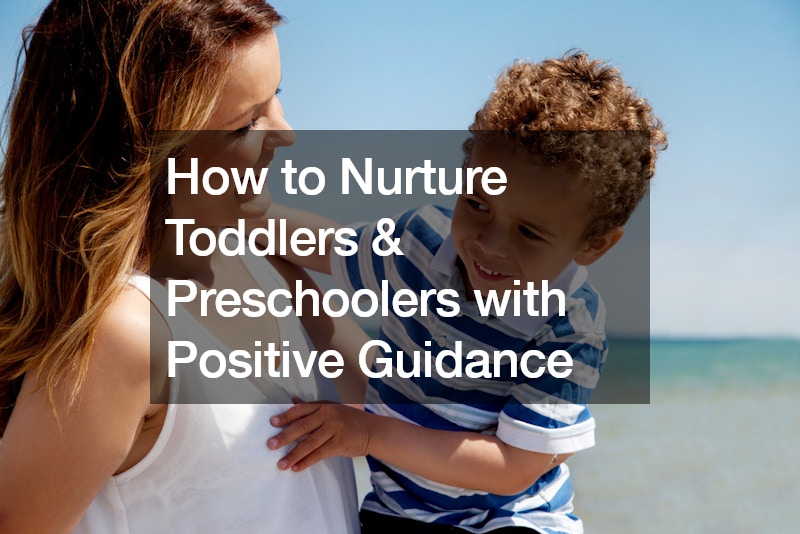Parenting toddlers and preschoolers can be both incredibly rewarding and endlessly challenging. These formative years are filled with exploration, growth, and the development of independence, but they also come with their fair share of tantrums, power struggles, and boundary-testing behaviors.
However, navigating this stage of childhood doesn’t have to be a constant battle. By incorporating positive guidance techniques into your parenting approach, you can foster a strong bond with your child while helping them learn and grow in a supportive environment.
Understanding Age-Appropriate Expectations
Every child develops at their own pace, and toddlers and preschoolers are no exception. Toddlers, typically aged between 12 months and just before three years, are at a crucial stage of development.
They’re beginning to grasp the myriad of emotions they experience daily while exploring a brand-new world filled with constant stimulation and learning opportunities. At this age, they require ample patience and guidance from caregivers to comprehend and communicate their needs effectively.
Preschoolers, ranging from three to five years old, are advancing in expressing themselves and managing their impulses. However, they still need substantial support as they explore their autonomy and assert their preferences. It’s crucial to recognize that young children are still learning how to regulate their emotions, communicate effectively, and navigate social interactions.
Setting age-appropriate expectations means tailoring your approach to match your child’s unique stage of development. For example, a two-year-old may have trouble sharing toys with others, while a four-year-old may struggle with following multi-step instructions. By understanding your child’s capabilities and limitations, you can set realistic expectations that promote success and minimize frustration.
Clear Communication at Eye Level
Effective communication is the cornerstone of positive guidance. When interacting with your toddler or preschooler, it’s essential to communicate in a way that they can understand. Get down to their eye level to establish a connection and maintain their attention. Use simple and clear language to convey your expectations, avoiding vague or ambiguous instructions.
Instead of saying, “Stop running,” try saying, “Please use your walking feet.” By providing clear directives and maintaining eye contact, you can help your child understand what is expected of them and increase their chances of compliance. These skills are not only vital for interactions at home but also beneficial when communicating with teachers and caregivers at preschools.
Saying Yes Whenever Possible
While it’s important to set limits and boundaries for your child, it’s equally important to say yes whenever possible. Look for opportunities to empower your child by granting them autonomy and independence in age-appropriate ways. Offer choices whenever feasible, allowing them to feel a sense of control over their lives.
If you must say no, provide a clear explanation and offer alternatives whenever possible. For example, if your child wants to play outside but it’s raining, suggest an indoor activity instead of simply saying no. By focusing on what you can say yes to, you can foster a more positive and cooperative relationship with your child.
Having a Plan
Parenting requires flexibility, but having a plan in place can help you navigate challenging situations with confidence. Anticipate potential triggers and develop strategies for addressing them calmly and effectively. Consider consequences that are logical and respectful, focusing on teaching rather than punishing.
For instance, if your child refuses to clean up their toys, you might implement a consequence such as temporarily removing a favorite toy until they comply. By having a plan in place, you can respond to misbehavior in a consistent and constructive manner, helping your child learn and grow from their experiences.
Maintaining a Close Connection
Above all, prioritize your relationship with your child. Connection is the foundation of positive guidance, and it’s essential to nurture your bond through regular quality time and affection. Take the time to engage with your child, listen to their thoughts and feelings, and validate their experiences.
Create opportunities for one-on-one time, whether it’s reading together before bedtime or going for a walk in the park. By maintaining a close connection, you can build trust, resilience, and mutual respect, laying the groundwork for a positive and fulfilling relationship.
In a Nutshell
Nurturing toddlers and preschoolers with positive guidance is essential for their overall development and well-being. By understanding age-appropriate expectations, communicating clearly, saying yes whenever possible, having a plan, and maintaining a close connection, you can overcome the challenges of parenting with confidence and compassion. Remember that parenting is a journey filled with ups and downs, but by approaching it with love, patience, and positivity, you can help your child thrive and flourish.
.

